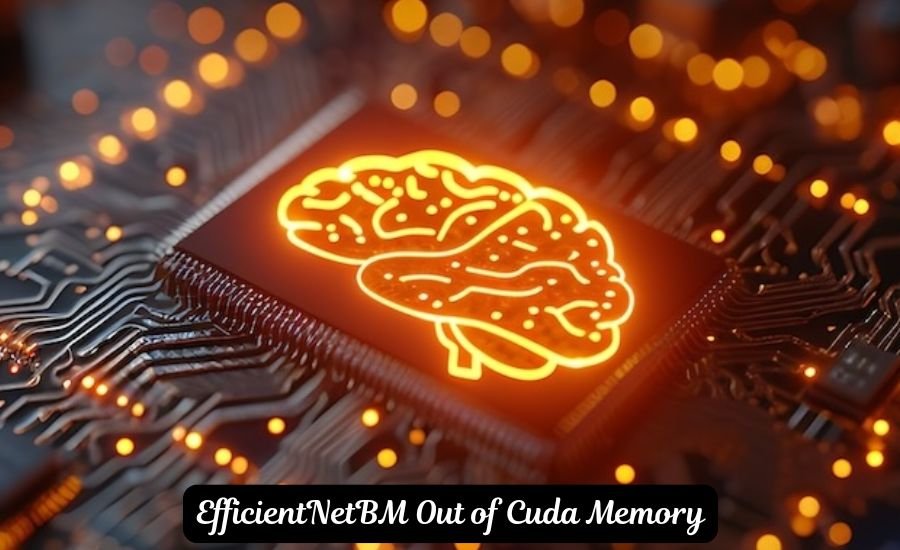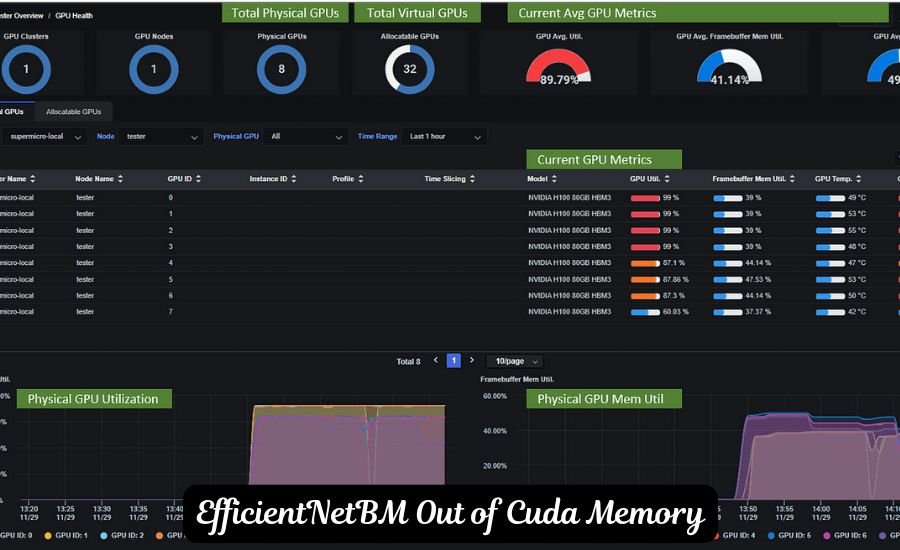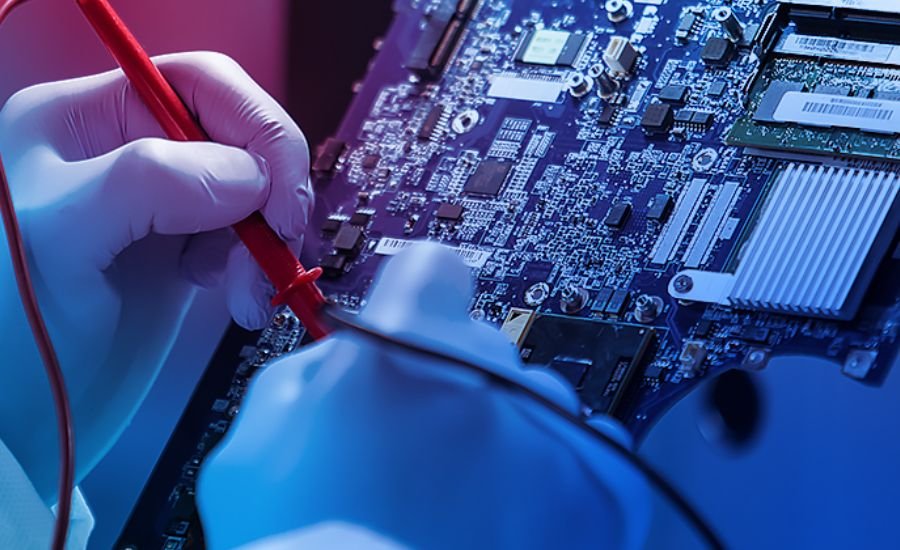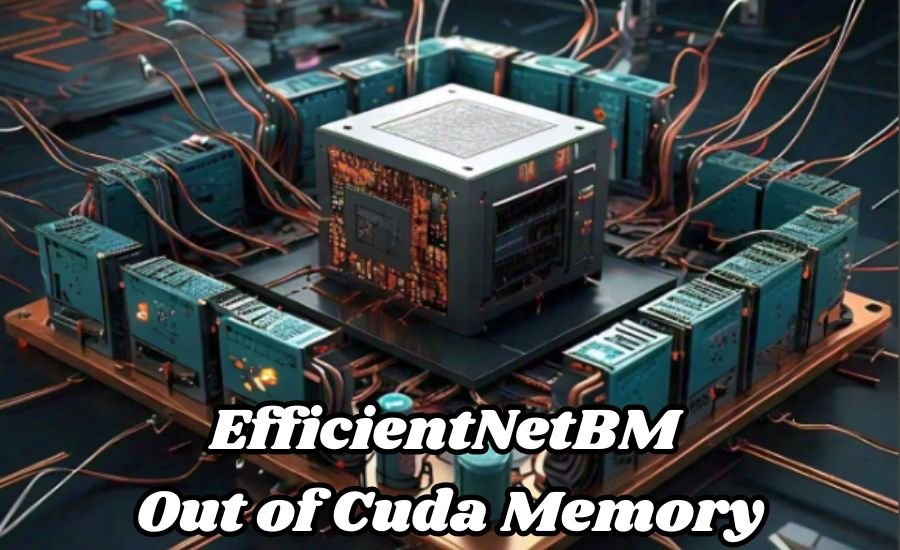Running into the “EfficientNetBM out of CUDA memory” error? Don’t worry, you’re not alone! This is a common issue that many people face when working with machine learning models on GPUs, especially with EfficientNetBM, which can be heavy on resources.
When this error pops up, it means that your GPU doesn’t have enough memory to handle the EfficientNetBM out of CUDA memory model. But don’t worry, there are simple steps to help fix this problem so you can get back to training your models smoothly. In this post, we’ll explore the causes and solutions to make sure you never see that “out of CUDA memory” error again.
Why EfficientNetBM Runs Out of CUDA Memory
EfficientNetBM is a powerful model, but it can use a lot of GPU memory. When we say “out of CUDA memory,” it means the computer cannot remember all the things needed to run the model. This can happen for several reasons, like using a large batch size or complex images.
Another reason could be the size of the model itself. EfficientNetBM out of CUDA memory has many layers that help it learn better, but this also means it needs more memory. When you try to process too many images at once, your GPU may get overwhelmed and run out of space.
To sum it up, understanding why EfficientNetBM runs out of CUDA memory is the first step in fixing it. Once you know the cause, you can take the right actions to manage the memory better.
Fixing the EfficientNetBM CUDA Memory Error
Fixing the EfficientNetBM out of CUDA memory error is easier than it sounds. First, you can try reducing the batch size. A smaller batch size means the model will process fewer images at once, which helps save memory.
Next, you can also reduce the image size. If you use smaller images, they take up less space in memory. This way, your GPU can handle more images without running out of CUDA memory.
Finally, consider using mixed precision training. This method helps your model use less memory by changing how numbers are stored. By following these tips, you can fix the memory error and train your model smoothly!
Preventing CUDA Memory Issues with EfficientNetBM

Preventing CUDA memory issues is all about being smart with resources. Start by monitoring your GPU memory usage while running EfficientNetBM out of CUDA memory. There are tools that let you see how much memory your model is using. This way, you can catch any problems early.
Moreover, setting up a clear training plan can help. For instance, start with simpler tasks and gradually increase the complexity. This will help your model learn without overwhelming your GPU.
Lastly, keeping your software up to date is also important. Developers often release updates that improve performance and memory usage. By following these practices, you can prevent running out of CUDA memory in the future!
EfficientNetBM CUDA Memory Needs
Understanding the memory needs of EfficientNetBM out of CUDA memory is key to successful training. This model requires a good amount of memory due to its architecture. It has multiple layers and uses many parameters, which help it achieve high accuracy.
When you choose a GPU, ensure it has enough memory for your tasks. Check the specifications of your GPU to see how much memory it offers. This will give you a better idea if it can handle the EfficientNetBM out of CUDA memory model effectively.
Finally, always consider your dataset size. A larger dataset means more images for the model to process. So, knowing both your GPU memory and dataset size can help you choose the right settings for EfficientNetBM.
Top Ways to Manage CUDA Memory for EfficientNetBM
Here are the top ways to manage EfficientNetBM out of CUDA memory:
Optimize Data Pipeline: Use efficient data loading methods to ensure images are loaded quickly and in the correct format. This helps minimize memory usage during training.
Use Mixed Precision Training: By utilizing mixed precision training, you can store some numbers in lower precision. This reduces memory requirements while speeding up training, allowing you to fit larger models or batch sizes.
Implement Gradient Accumulation: If your GPU has limited memory, use gradient accumulation. This allows you to simulate larger batch sizes by accumulating gradients over several smaller batches before updating the model.
Monitor Memory Usage: Regularly check your GPU memory usage with tools like NVIDIA’s nvidia-smi. This helps you identify potential issues before they cause errors, allowing you to adjust settings accordingly.
Clear Cache Frequently: Periodically clear the GPU cache during training. This helps free up memory that may be held by unused variables or temporary tensors, ensuring that more space is available for new data.
By following these tips, you can effectively manage CUDA memory when working with EfficientNetBM out of CUDA memory and enhance your training experience.
Understanding EfficientNetBM and Memory Limits
Understanding EfficientNetBM and its memory limits is essential for anyone working with it. Every model has limits based on its design and architecture. EfficientNetBM out of CUDA memory is no different; it has specific memory requirements that need to be met for optimal performance.
When you push the model beyond its limits, you might see errors related to CUDA memory. Learning about these limits helps you set realistic expectations. This understanding is key to preventing issues before they occur.
In summary, by learning about EfficientNetBM’s memory requirements, you can better prepare for training. This way, you can avoid problems and achieve the results you want.
Optimizing GPU Usage for EfficientNetBM

Optimizing GPU usage for EfficientNetBM out of CUDA memory is all about smart choices. First, use data augmentation wisely. Data augmentation helps create more training examples but can also increase memory usage. Find the right balance to keep your GPU happy.
Second, consider using gradient accumulation. This method lets you use a smaller batch size while still getting the benefits of a larger one. By accumulating gradients over several smaller batches, you can improve efficiency without running out of memory.
Finally, keep track of memory usage during training. Monitoring your GPU will help you spot potential issues early. By optimizing your GPU usage, you can ensure a smoother experience with EfficientNetBM.
Reducing Memory Usage in EfficientNetBM
Reducing memory usage in EfficientNetBM out of CUDA memory can help you avoid errors. First, you can simplify your model by reducing the number of layers. A simpler model will use less memory and still provide good results.
Next, you can also employ techniques like model pruning. Pruning means removing less important parts of the model. This can lead to lower memory usage without sacrificing much performance.
Lastly, consider using a different optimizer. Some optimizers require more memory than others. By switching to a lighter optimizer, you can save memory and help your model train more efficiently.
Simple Fixes for CUDA Memory Errors
Here are some simple fixes for EfficientNetBM out of CUDA memory errors:
Reduce Batch Size: Lowering the batch size means your model will process fewer images at once. This helps save GPU memory, making it less likely to run out of space.
Clear Unused Variables: After you’re done using certain variables in your code, make sure to delete them. This frees up memory that can be used for other tasks.
Restart Training: If you experience a memory error, try restarting your training process. This can clear any memory leaks that occurred during previous runs.
Use Smaller Images: Resizing your input images to a lower resolution can significantly reduce memory usage. Smaller images take up less space in memory.
Check Software Versions: Ensure that your software, libraries, and drivers are updated. Outdated versions can cause inefficiencies and lead to memory errors.
Limit Data Loading Workers: Reducing the number of workers that load data can help decrease memory consumption during training.
Enable Gradient Checkpointing: This technique saves memory by not storing all intermediate activations during training. Instead, it recalculates them as needed.
By implementing these fixes, you can effectively manage memory usage and minimize EfficientNetBM out of CUDA memory errors in your training process.
Avoiding Memory Bottlenecks with EfficientNetBM
Avoiding memory bottlenecks with EfficientNetBM out of CUDA memory is key to smooth training. Start by using efficient data loading methods. Load your data in smaller batches to avoid overwhelming your GPU.
Additionally, consider using a distributed training approach. This method spreads the workload across multiple GPUs. By dividing the tasks, you can significantly reduce the memory burden on each GPU.
Finally, always clean up any unused memory after each training epoch. This helps ensure that your GPU has enough space for the next round of training. These practices can help you avoid memory bottlenecks in the long run.
Best Practices for EfficientNetBM Memory Issues

Using best practices can greatly help with EfficientNetBM out of CUDA memory issues. First, always monitor your memory usage while training. Keeping an eye on memory will alert you to problems before they become serious.
Next, regularly back up your work. If you encounter memory errors and need to restart, having a backup saves you time and effort. This way, you don’t lose progress if something goes wrong.
Finally, seek advice from the community. Many people have faced similar issues and can offer helpful solutions. Learning from others can help you navigate memory challenges more effectively.
You Should Know: H2M Loading Screen Glitch
Causes of EfficientNetBM CUDA Memory Errors
There are many causes for EfficientNetBM out of CUDA memory. One common cause is the size of the model itself. The more layers and parameters your model has, the more memory it will need.
Another reason could be using high-resolution images. Large images consume more memory, which can quickly lead to errors. Make sure to resize images before training to avoid this issue.
Lastly, if you’re using large batch sizes, this can also lead to memory errors. High batch sizes require more GPU memory, so reducing the batch size can help prevent running out of memory.
Common EfficientNetBM Memory Challenges
Here are some common memory challenges faced when working with EfficientNetBM:
Large Model Size: EfficientNetBM out of CUDA memory has many layers and parameters, making it a complex model. This complexity requires significant memory, leading to potential “out of CUDA memory” errors.
High-Resolution Images: Using high-resolution images for training can quickly consume GPU memory. Larger images take up more space, which can overwhelm the available memory, especially on lower-end GPUs.
Batch Size Limitations: Choosing an inappropriate batch size can cause memory issues. A large batch size may lead to exceeding the memory capacity, while a very small batch size may slow down training efficiency.
Data Pipeline Inefficiencies: A poorly optimized data pipeline can increase memory consumption. Inefficient loading and processing of images can lead to unnecessary memory usage and slow training times.
Hyperparameter Tuning: Experimenting with different hyperparameters can lead to increased memory requirements. Trying many configurations at once can quickly use up available GPU memory.
Memory Leaks: Occasionally, memory leaks can occur if the code doesn’t properly free up memory. These leaks can gradually consume memory resources, leading to errors during training.
Limited GPU Resources: Using a GPU with insufficient memory for the model and data can result in frequent errors. Understanding your hardware limitations is key to avoiding these challenges.
By being aware of these challenges, you can better prepare for potential memory issues when training with EfficientNetBM out of CUDA memory.
Tips for Running EfficientNetBM on Low Memory
Running EfficientNetBM out of CUDA memory on low memory can be tough, but there are ways to make it work. First, choose a smaller version of the model if possible. There are many versions of EfficientNet that require less memory.
Second, try using techniques like early stopping. This method allows you to stop training when your model stops improving, saving memory. You won’t waste resources on unnecessary epochs.
Finally, be sure to clear your GPU memory before starting a new training session. This ensures that your GPU has enough space for the new task. With these tips, you can run EfficientNetBM out of CUDA memory on low memory more effectively!
Troubleshooting EfficientNetBM Memory Errors

Troubleshooting EfficientNetBM out of CUDA memory errors can be straightforward. First, review your code for any mistakes. Sometimes, a small error can lead to big memory issues, so double-check everything.
Next, analyze your training process. Look at how you’re loading data and the batch sizes you’re using. Adjusting these settings can often solve memory problems quickly.
Lastly, don’t hesitate to consult the community forums. Many users share their experiences and solutions. Learning from others can provide you with valuable insights into fixing memory errors.
Conclusion
In conclusion, dealing with the “EfficientNetBM out of CUDA memory” error can feel challenging, but it doesn’t have to be! By understanding why this error happens and using the right strategies, you can keep your training smooth and efficient. Remember to check your GPU memory, reduce batch sizes, and monitor your data carefully. These simple steps can make a big difference!
Always keep learning and exploring new ways to improve your machine learning projects. The more you know about EfficientNetBM out of CUDA memory and management, the easier it will be to overcome any obstacles. So, don’t be discouraged! With the right tools and knowledge, you can successfully train your models without running into memory problems. Happy coding!
Read Next: Add Item Menu NG Open VR
FAQs
Q: What does “efficientnetbm out of CUDA memory” mean?
A: This message means that your GPU does not have enough memory to run the EfficientNetBM out of CUDA memory model. It often occurs when the model is too large or when processing too many images at once.
Q: How can I fix the “out of CUDA memory” error?
A: To fix this error, you can try reducing the batch size, using smaller images, or clearing unused variables in your code. These changes can help free up memory on your GPU.
Q: Why is EfficientNetBM using so much memory?
A: EfficientNetBM is designed with many layers and parameters, making it a powerful model but also memory-intensive. The complexity of the model requires more GPU memory to function properly.
Q: Can I use EfficientNetBM on a GPU with low memory?
A: Yes, but you may need to make adjustments like using a smaller version of the model, reducing batch sizes, or employing gradient accumulation techniques to fit within the memory limits.
Q: How do I monitor my GPU memory usage?
A: You can monitor GPU memory usage using tools like NVIDIA’s nvidia-smi command, or software like GPU-Z. These tools provide real-time information about how much memory is being used.
Q: What is batch size, and why does it matter?
A: Batch size refers to the number of training examples used in one iteration. A larger batch size uses more memory, while a smaller batch size can help prevent running out of CUDA memory.
Q: Are there alternatives to EfficientNetBM for lower memory usage?
A: Yes! There are several lighter models available, such as MobileNet or SqueezeNet, which are designed to use less memory while still providing good performance for certain tasks.
